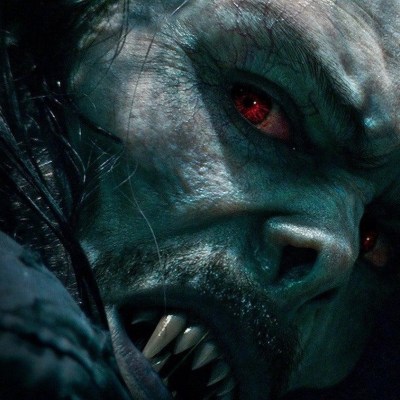Morbius Post-Credits Scenes Explained
We stayed for the post-credits scenes in Morbius so that you don’t have to.

This article contains Morbius spoilers.
Ever since Marvel Studios began the tradition of including extra scenes during or after the end credits of its films–starting with the now legendary appearance of Samuel L. Jackson as Nick Fury at the end of Iron Man–such bonus content is considered mandatory. With Morbius, Sony’s extended Spider-Man Universe, which is a poor man’s version of the MCU, reached a new low via two bonus scenes that are ridiculous, pointless, and clearly the product of rushed, haphazard decision-making. These really are laughably bad.
We want to stress that these scenes, just like the rest of the wretched, dull, sloppy Morbius, are not products of Marvel Studios nor its brain trust headed by Kevin Feige and his team. Sadly, however, a character developed for one of the Sony movies that Marvel Studios has produced–2017’s Spider-Man: Homecoming–does show up here.
It’s all thanks to the multiverse that Marvel Studios began introducing in first the Loki TV show and then last year’s Spider-Man: No Way Home. It’s also a concept that certain parties in the Sony camp are seizing on as a nonsensical way to lure fans into their films by tying them in whatever ways possible to the MCU. So one could argue that this is all Marvel Studios’ fault in a way (sorry, Kevin).
In Morbius, Dr. Michael Morbius (Jared Leto) is experimenting with a serum derived from vampire bat DNA to cure a rare blood disorder that he suffers from. Instead the serum gives him enhanced strength, endurance and speed, as well as a need to drink human blood that he struggles to control.
When his old friend and wealthy benefactor Milo (Matt Smith), who suffers from the same disorder, takes the serum, he allows himself to go full monster. Morbius battles Milo under the streets of New York City and eventually kills him, with the heavily-edited film ending rather abruptly at that point and the credits rolling. For we are in a hurry to get to…
The Post-Credits Scenes
The two scenes during the credits of Morbius really sort of play as two halves of the same sequence, but are split, we suppose, to keep audience members in their seats.
In the first scene, we see the skies above New York City crack open with the now-familiar purple light indicating a breach between the universes. Presumably, this is the same inter-dimensional convergence which occurred during the climax of Spider-Man: No Way Home. Cut to a prison cell where Adrian Toomes, a.k.a. the Vulture (Michael Keaton), suddenly materializes. He’s dressed in prison duds.
The implication is that this Toomes suddenly was transported from his cell in a different universe–presumably the MCU universe where was jailed at the end of Spider-Man: Homecoming–and ended up here. “Hope the food’s better,” he murmurs to himself. A newscast then announces that he is apparently being set free because in this universe, Toomes has not been charged with any crimes.
In the second scene, we see Morbius driving out to the desert somewhere (obviously he’s not in New York City any longer) and coming to a desolate spot where he gets out and waits. Suddenly out of the sky appears Toomes in his full Vulture regalia (or at least a CG version of him since we never see Keaton’s face again). The Vulture expresses something to the effect that he doesn’t know how he got here, but he thinks it “has something do with Spider-Man.”
Toomes then says that he believes that he and Morbius should consider working together to “do some good,” to which Morbius replies, “Intriguing.” And that’s it. Fade out.
What Does This All Mean?
First, these two scenes were obviously part of a reshoot, because the Morbius trailers showed Morbius and Toomes actually meeting in a prison setting of some kind, and that scene no longer exists.
Second, when you think about it, none of this makes sense. Because Toomes has been released in the universe in which Morbius exists, that means he has not fought Spider-Man here, which means that Spider-Man himself may not exist (at least not yet) in this universe either. A scene showing Morbius walking past a Spider-Man poster on a city wall–also seen in trailers–is also missing from the movie.
So why would Toomes, who resorted to a life of crime in Spider-Man: Homecoming basically to save his business and feed his family, feel the need to team up with a scientist who, even if he is exonerated of most of his crimes at the end of the movie, has besmirched his reputation by experimenting illegally with substances that turned him into a blood-hungry vampire?
And why would Morbius, who spends most of the second half of his stupid movie trying to stop Milo and control his own vampirish impulses, all of a sudden decide to team up with a guy in a flying tech suit who he just met, and who’s spouting some gibberish about someone called Spider-Man? Maybe we’re missing something here, or maybe someone smarter than us can figure it out, but these bonus scenes make no sense at all on a surface level.
What It Really All Means
This is really what those scenes are all about: producer Avi Arad and his partner, Matt Tolmach, somehow still have leverage over Spider-Man properties that are produced by Sony Pictures, which is why we’re getting a bunch of Sony Spider-Man Universe movies starring just villains without Spider-Man in them.
Arad certainly deserves credit for his role in saving Marvel Comics and launching what became Marvel Studios in the period from the mid-1990s to the mid-2000s. But starting with the awful The Amazing Spider-Man 2 and its ham-fisted attempts to plant the seeds for a Sinister Six movie, Arad has pursued his dream of creating his own Marvel universe based solely around Spidey’s rogues gallery. The Vulture/Morbius scene shows he’s still obsessed with throwing together some version of the Six (even though Spider-Man: No Way Home sort of played that card to some extent).
Unfortunately, his track record of going it alone at Sony without Marvel Studios hasn’t been the best. His films to date–Venom, Venom: Let There Be Carnage, and now Morbius–are all saddled with crappy scripts, formulaic stories, perfunctory direction, wild shifts in tone and performances, an overabundance of shitty CG (watch the incomprehensible fight at the end of Morbius and tell us if you can discern what’s going on), and teases for other movies that end up going nowhere.
Fortunately for him and Sony, the first two Venom movies have been outsized hits, thanks probably to Tom Hardy’s star power and the continuing popularity of the title character. We’ll have to see what happens if Morbius underperforms, although at least one more Arad-produced movie, Kraven the Hunter, is already in production and an inexplicable Madame Web film is on the way as well.
We have no idea at this point whether Spider-Man — in the form of Tom Holland, Andrew Garfield or somebody else — will show up in these movies. We don’t even know if Holland will be back in the MCU yet. All we know is that this Sony Spider-Man Universe as currently constructed must end, and these mid-credits insults to our intelligence are incontrovertible proof.
Morbius is out now in theaters.


